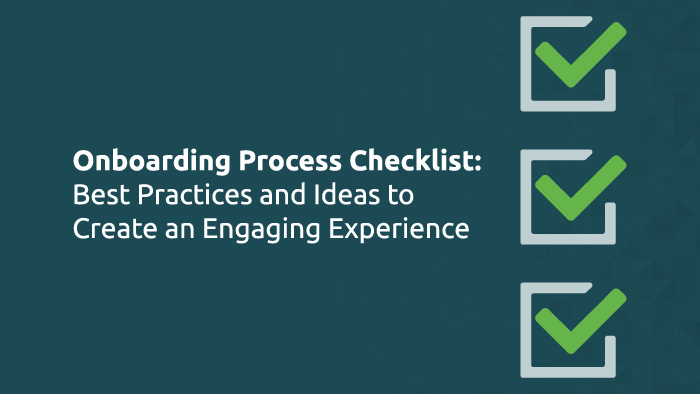By Chloe Sesta Jacobs
“Onboarding.”
It’s one of the hottest topics across most industries right now, and many of us are already pretty clued up about what it means. It’s about creating a recruitment and early days process that integrates a new employee into the system, and sets them up for delivering results… isn’t it?
It is. But that’s not all it’s about. In this article, we’re going to be introducing employee onboarding from a different perspective; from the perspective of your existing workforce.
For ideas on how to build a strong onboarding process, check out our infographic “Onboarding Process Checklist: Best Practices and Ideas to Create an Engaging Experience.”
Here, we take a look at how optimizing the performance of your existing employees and providing suitable and relevant training can help you to track the onboarding process of new hires and ensure it’s achieving maximum results.
1. Utilize Available Software
If you haven’t already started offering IT training for your workforce, then now is the time to do so. Why?
Because dedicated software can make it easier to track the onboarding process and ensure you’re covering everything that’s needed from both a cultural and legal perspective.
Scheduling software with employee onboarding features works to capture essential data digitally so you can easily see where you’re up to in the process. Considering that around 8% of all paper documents get lost, and 3% are misfiled, digital tracking is becoming increasingly important, particularly with the need for compliance.
By utilizing a learning management system (LMS), tracking can be made simple. Administrators can manage individual performance and also generate reports about any employee’s onboarding progress. This allows the administrator to make and adjustments to the plan quickly and easily.
2. Get Everyone Involved
Communications awareness is another area where it’s important to ensure you’re up to speed. This is because, contrary to popular belief, onboarding isn’t handled by just a single department.
A good onboarding process extends across the organization.
In fact, it actually starts prior to day one with the candidate experience, and moves through HR, administration, and various teams. By only tracking the onboarding process from one perspective, you’re not getting the full picture. All departments need to be able to communicate with each other and come together to provide a full overview of what’s happening.
3. Focus on Your Managers
Quite simply, it’s impossible to properly track the onboarding process if an organization doesn’t have anyone with the necessary skills that enables them to do so. Now is the time to really develop the coaching skills of managers and leaders, and provide them with the knowledge they need to successfully monitor and guide new employees.
Half of all managers say they don’t receive any training when taking on a new management role. It’s time to flip onboarding on its head and focus on your leaders rather than only the new employee.
4. Identify KPIs
Organizations should ensure that managers and leaders understand what key performance indicators are prioritized by the business. By knowing why a new employee has been brought on board — to improve sales, to boost investor relations, to implement new processes, etc. — it becomes easier to track how long it’s taking for the new employee to generate value and deliver the intended results.
If no change is seen in KPIs, if new hires are failing to meet expectations, it may be a sign that your onboarding process is not performing optimally, rather than it being a sign that you’ve got the wrong person for the job.
5. Ask New Employees Directly
Perhaps the easiest way to track the onboarding process? Ask the new employee themselves how they’re getting on.
Direct conversations like this aren’t always easy, so this is another reason why training managers is important – when they can develop skills around having difficult conversations and listening to feedback and criticism, they can make decisions based on what’s best for their employees, rather than getting defensive or making an employee feel like their concerns aren’t being heard.
Research shows that the first month and the third month are when the majority of new employees leave, so these are good times to schedule informal chats.
This gives you an opportunity to adjust your onboarding process through feedback to make it more efficient.
6. Ask Managers, Too
Don’t just ask the new employee how they’re getting on … ask their leaders, too. Taking charge of the “hand holding” through the first few days and months on the job, feedback from direct managers is essential for fully tracking the success of the onboarding process.
This can help to track areas such as the speed of hiring, the quality of the candidate, and how well the pre-employment stage of the onboarding process has prepared them for the role.
Managers should be trained to pick up on aspects that could signal a poor onboarding process, such as repeatedly asking the same questions and making errors in essential tasks.
One Size Doesn’t Fit All
Creating an onboarding process that helps integrate new employees into the workforce is fast becoming a strategic necessity, especially in terms of employee retention during the talent shortage crisis.
However, the big problem with onboarding is that there’s no right or wrong; there’s no hard and fast rule over how onboarding should be approached, or what it should involve. Every business has its own ideas, and this is exactly why tracking the onboarding process is so important; it’s a little bit of trial and error.
Tracking the onboarding process of a new employee not only helps to ensure you’re rolling out your strategy effectively, but also helps to identify gaps and provides an opportunity for you to tailor onboarding to meet employee needs and business needs.
Want more in-depth info about improving your onboarding process? Learn from three experienced employers in this free on-demand webinar:
About Chloe Sesta Jacobs
Chloe’s why is people; she gets her kicks from intensifying the purpose and exploring the potential of those around her. She works as Head of People & Culture at Deputy, a robust scheduling software that can be used to manage your workforce in a wide variety of different industries. Chloe sees her work as an extension of her lifestyle and is constantly working on revolutionizing the people and culture space.


